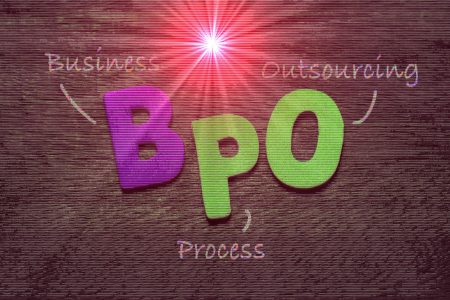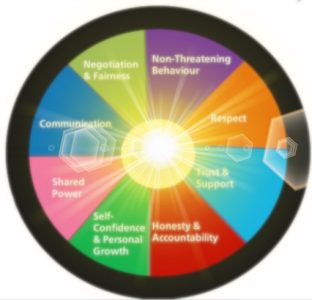REVIEW OF LITERATURE:
The impact of the HRM processes on business performance can be monitored by identifying its contribution to other key business processes such as – business strategy, people satisfaction, on manage processes, operate process and on support process. Innovation are continuous process for HR professional working in and for IT organization. The way aspirations and ambitions are in the increasing state among the IT professionals, new ideas translating to initiate are essential to make people happy at work. The following are some of the HR initiatives being practiced successfully in various companies.
The change of information technology is faster than any other processes in the organization. This demands tomorrow’s knowledge for today’s practice. As people are integral part of the whole system, the selection of the best talent, developing and retaining them for a longer period is very crucial. One of the major hurdles the HR department needs to cross, is the changing technological environment. The IT sector thrives on new technology. The employees must be fully aware with the fact that the introduction of a new technology, requires them to update their skills and keep in touch with the new developments. It is also very important to stay ahead of the competition and help develop new technology. Companies are investing huge resources in the new technology and communication infrastructure to avail competitive advantage. A shared culture needs to be developed, where the employees learn to embrace the change amicably. Thus the HR professionals need to work with the technical staff and help the employees cope with the change.
The major human resource functions in IT organization are basically the 3B’s- buying talents, borrowing talents and building talents. Quantitative people with embedded interests are the key to success for information technology companies. Buying talents are basically recruitment of employees, which is the primary activity that accounts for the maximum time spent by the HR staff because of the high manpower turnover in this kind of organizations. The large IT companies have separate sourcing departments either as a part of or independent of the HR department. Line managers are closely involved in selection of staff in coordination with the HR department. Line managers are closely involved in selection of staff in coordination with the HR department. It has been observed that the smaller companies use recruitment consultants and informal sources more than the larger companies who prefer to advertise themselves or use employee referrals. According to a survey conducted by Business Today, in India the Information Technology companies are looking mainly for people from premier institutions such as the Indian Institute of Technology (IIT) or from the Indian Institute of Management (IIM) or people who have obtained a postgraduate diploma in computer applications (MCA’s). The number of people who fit this criterion forms a very small part of the entire Indian population. There is a shortage of adequately qualified workforce in the IT sector. This makes the formulation of recruitment strategies by the HR department even more cumbersome.
Researchers (Bakos and Treacy, 1986; Cash and Konsynski, 1985; Kling, 1980; Kriebel and Moore, 1982) have studied the impact of information technology at different levels of the organization. Huber (1981, 1988) using organization theory, formulated hypotheses for empirical testing which reflect the impacts of IT on the decision behavior and design of organizations. Bakos (1987) noted that most of the early studies considered IT as a dependent variable for analyzing its adoption by organizations. As reported by him, the results of several empirical studies (Attwell & Rule, 1984; Carter, 1984; Robey, 1981) that attempted to analyze IT ‘s impact on organizations have proved inconclusive.
The increasing global interdependencies and the accelerating pace of change demand more flexible and adaptive organizations (Malone and Crowston, 1991). Malone and Smith (1984) have defined organizational flexibility in terms of “vulnerability” and “adaptability.” Effective implementation of IT would decrease vulnerability by reducing the cost of expected failures and enhance adaptability by reducing the cost of adjustment. Rockart and Short (1989) attribute the ever increasing need for managing interdependence to competitive pressures that included globalization, time-based competition, increased market risk, and a greater emphasis on customer service and cost reduction. Bennis (1974: 22) notes that “the organization’s response to the environment will continue to be the crucial determinant for its effectiveness.“. Since post-industrial organizations will be faced with increasing environmental complexity and turbulence, organizations’ needs to process information and make decisions will be substantially increased (Huber, 1984).
The capabilities and flexibilities of computer-communication systems make them increasingly relevant to organizations by being able to respond to any specific information or communication requirement (Holt, 1992: 40). Benjamin and Levinson (1993) emphasized that for IT-based change to be effective, technology, business processes, and organization need to be adapted to each other. Comparing the present information revolution with the Industrial Revolution, Malone and Rockart (1993) indicated that the latest changes in IT would lead to the evolution of new technology-intensive organizational structures.
They project that the advances in IT would result in dramatic decline in the costs of “coordination” which would lead to new, coordination-intensive business structures. Rockart and Short (1989) suggest that IT would enable the firms to respond to the “new and pressing competitive forces by providing for” effective management of interdependence. “Inter-organizational relations, that are based upon trust and conditions of unstructured authority” (Litwak and Hylton, 1962) would be created using newer types of coordination mechanisms. Malone and Crowston (1991) believe that in light of these new possibilities there is need to reassess our current theories of organizations, of markets, and of management. The HR functions like other functions are under scrutiny to deliver value-adding quality services to the business, coupled with a reducing operating cost.
The biggest issue for HR may be in the definition compelling value proposition to outsource. Defining a workable scope of services is fundamental to outsourcing, but whereas a service such as finance and accounting, for example, has relatively clear demarcation between transactional and value adding activity, it is less easy to map this for HR. There is also a significant element of policy interpretation and application of advice “wrapped around” the HR service, and the delivery of transactional processes.
A consequence of HR outsourcing may be to shift in action and responsibility from HR to line management exposing skills and knowledge gaps, and resulting in resistance from within. Recognizing these challenges, it is still hard to get away from the fact that HR is typically run as a cost centre within a business, and as such is expected to provide a value-added service to the business. The challenge is to do HR outsourcing in a well-planned way, with clear goals in mind and ensuring that change-management risks are well managed. With IT outsourcing becoming commoditized, current outsourcing suppliers may look to use their service-provider skills in other areas. HR would be a prime target for most organizations.







